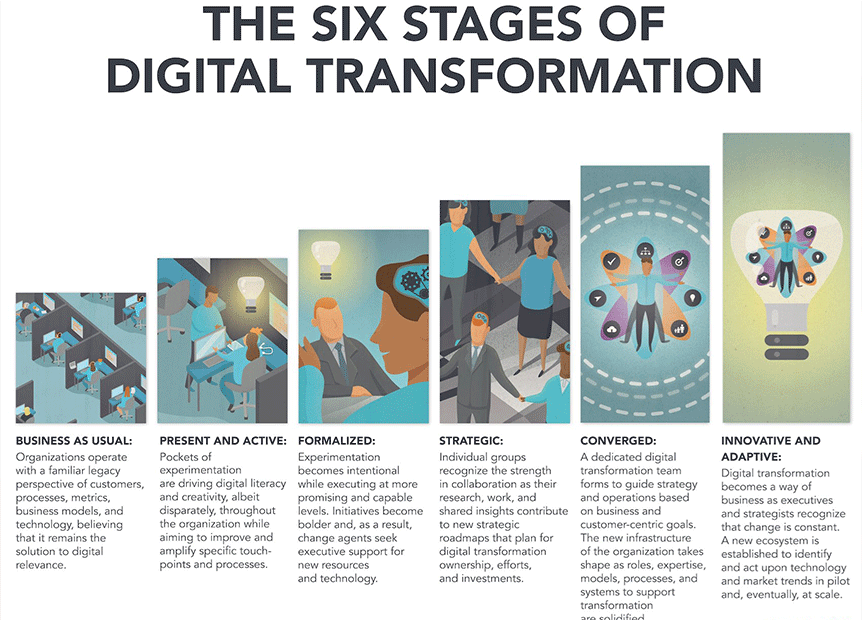We like this one!…
The definition of #digitaltransformation https://t.co/lPsOS3MDlA pic.twitter.com/R5eVTa6Bxz #ABM #accountbasedmarketing #marketingautomation https://t.co/WhK30IfXAh
— KellyJWaffle (@KellyJWaffle) February 1, 2017
Business as Usual: Organisations operate with a familiar legacy perspective of customers, processes, metrics, business models and technology, believing that it remains the solution to digital relevance.
Present and Active: Pockets of experimentation are driving digital literacy and creativity, albeit disparately, throughout the organisation, while aiming to improve and amplify specific touch-points and processes.
Formalised: Experimentation becomes intentional while executing at more promising and capable levels. Initiatives become bolder and, as a result, change agents seek executive support for new resources and technology.
Strategic: Individual groups recognise the strength of collaboration as their research, work and shared insights contribute to new strategic digital transformation ownership, efforts and investments.
Converged: A dedicated digital transformation team forms to guide strategy and operations based on business and customer-centric goals. the new infrastructure of the organisation takes shape as roles, expertise, models, processes and systems to support transformation are solidified.
Innovative and adaptive: Digital transformation becomes a away of business as executives and strategists recognise that change is constant. A new ecosystem is established to identify and act upon technology and market trends in pilot and, eventually, at scale.

